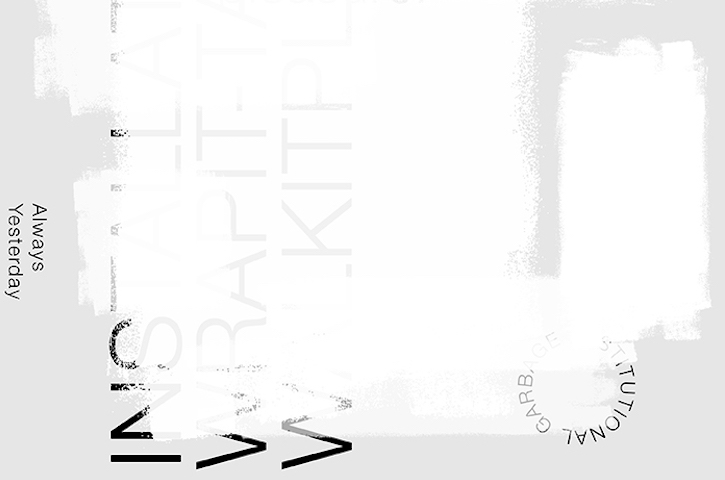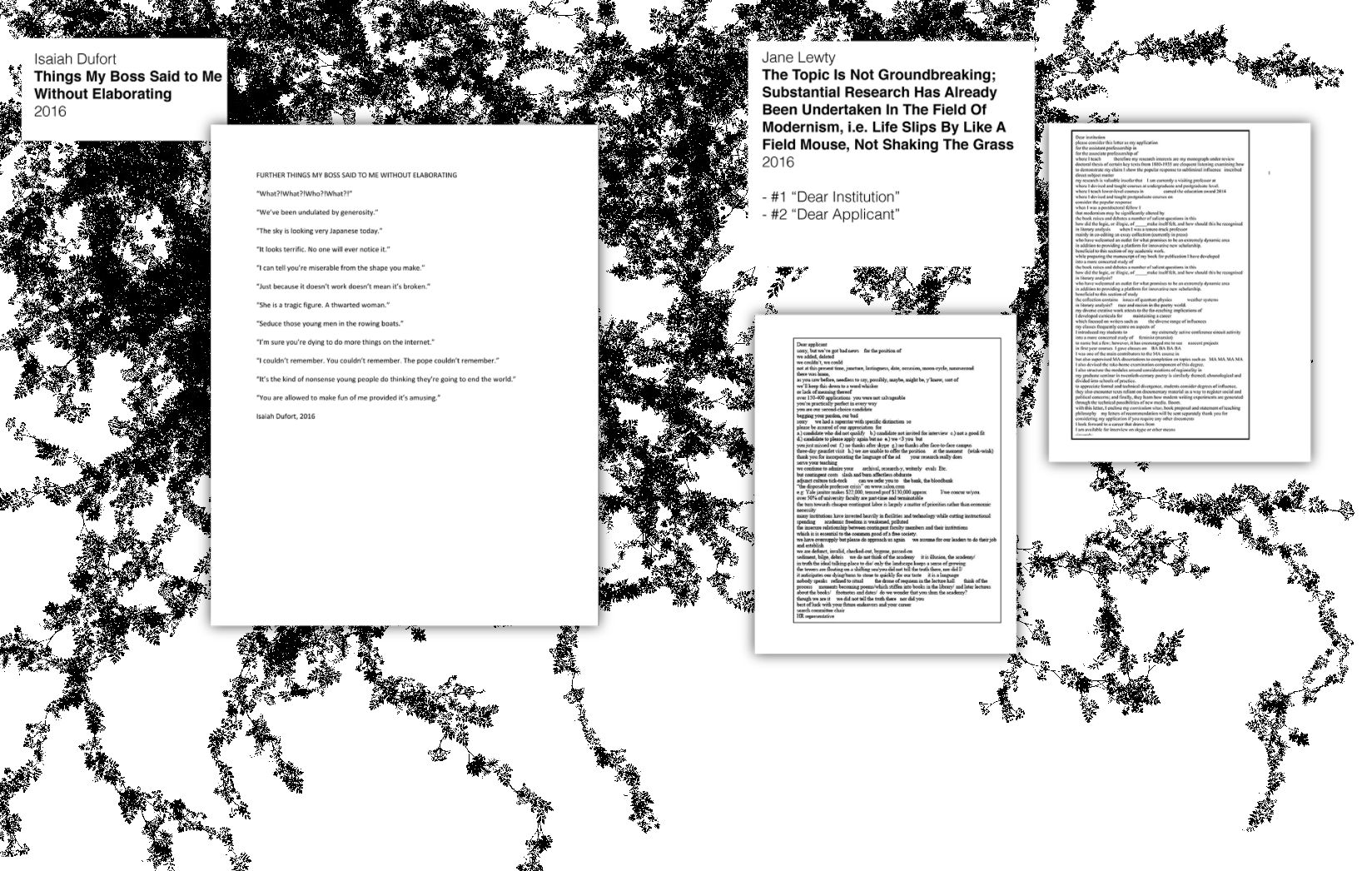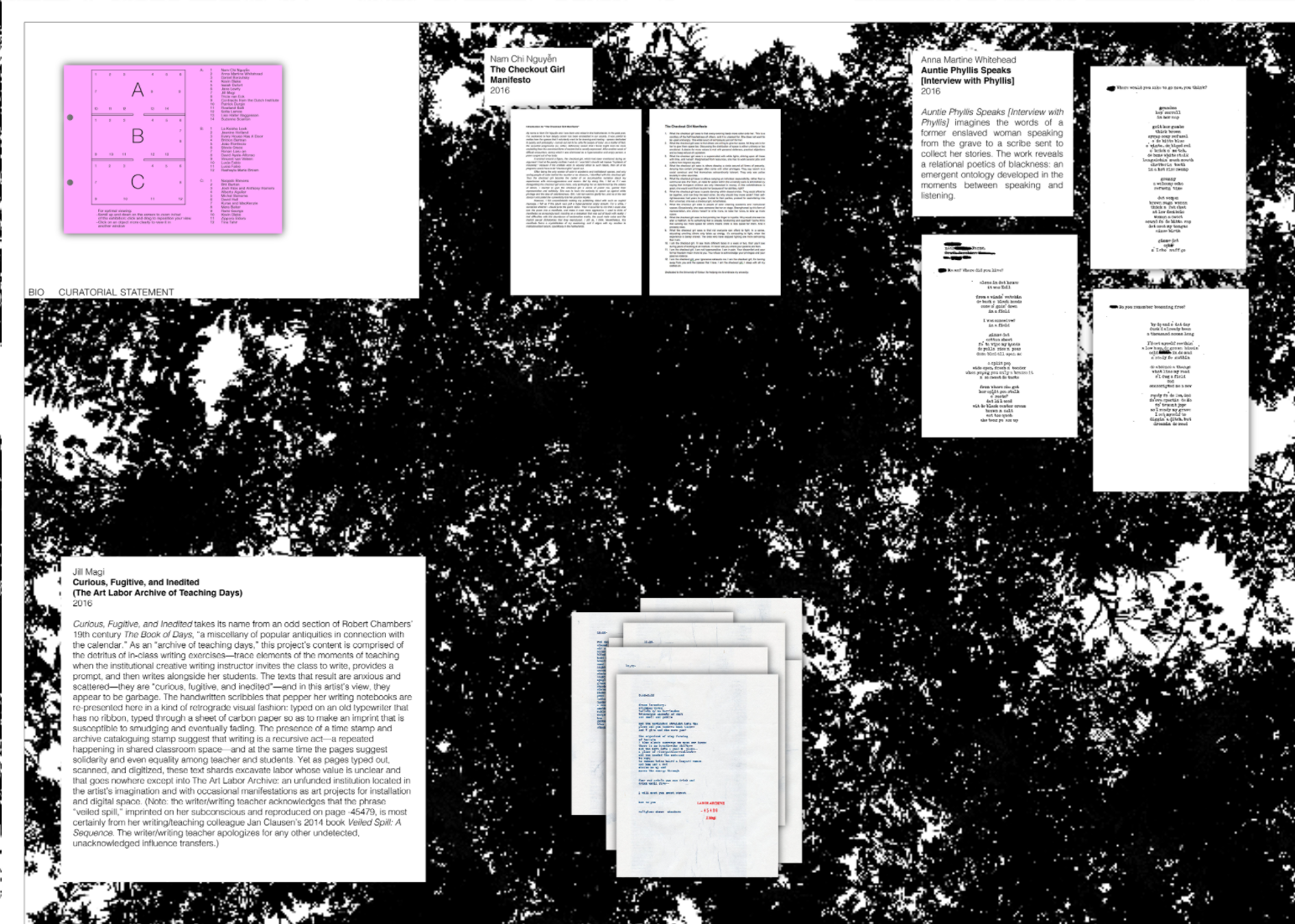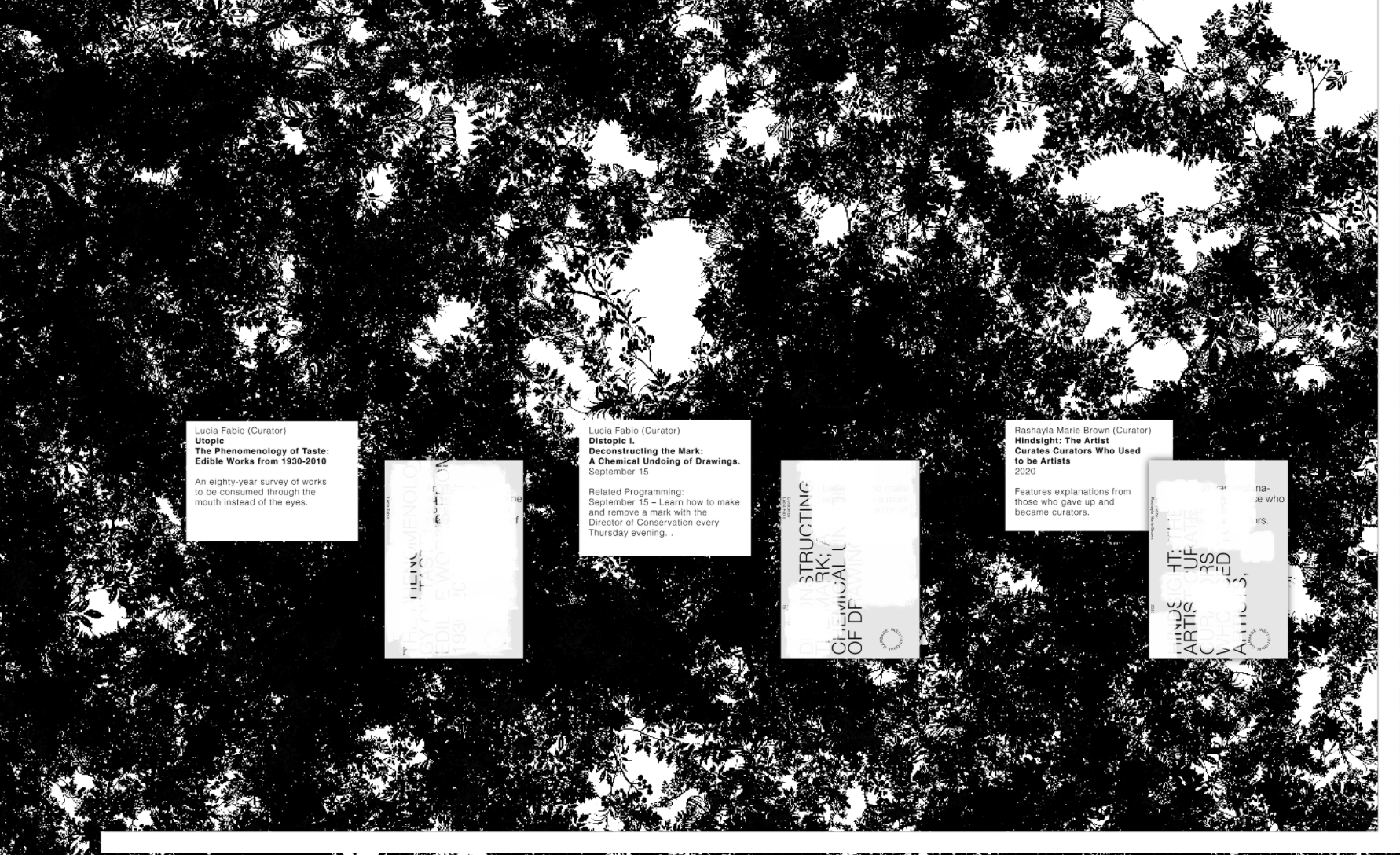Institutional Garbage





“Does the digital envy the analog, the haptic sense of its excesses, the paper trail’s disarray? Is it nostalgic for the language and forms that filled the briefcases of bureaucracy? Does it envy the overflow of books and paper onto desks and floors and burgeoning from trash bins?” —Anne K. Yoder, “On Institutional Garbage,” Fanzine.
Featuring Alberto Aguilar, Brit Barton, Mara Baker, Kevin Blake, Zippora Elders, Rami George, David Hall, Kuras and MacKenzie, Josh Rios and Anthony Romero, Michal Samana, Naqeeb Stevens, Tina Tahir, Anna Martine Whitehead; writers: Lise Haller Baggesen, Daniel Borzutzky, Isaiah Dufort, Patrick Durgin, Tricia Van Eck, Jane Lewty, Jill Magi, Nam Chi Nguyễn, Rowland Saifi, Suzanne Scanlon, Mia You andMaarten van der Graaf with Fiep van Bodegom and Obe Alkema; & curators: David Ayala-Alfonso, Britton Bertran, Rashayla Marie Brown, Every house has a door, Lucia Fabio, João Florêncio, Stevie Greco, Jeanine Hofland, Renan Laru-an, La Keisha Leek, Sofia Lemos andVincent van Velsen. Online Exhibition Design and publication design: Pouya Ahmadi.
Institutional Garbage is an experimental publication that endeavors to grasp the memory, feeling, and trace of an online exhibition of the same name that took place in the fall of 2016. The online exhibition, curated by Caroline Picard and Lara Schoorl, presented the administrative residue of imaginary public institutions produced by artists, writers, and curators. Contracts, email correspondences, documented unproductivity, syllabi, scanned objects, obstacle courses, and other fragments were collected to illustrate the backend activities of imaginary bureaucracies, to trace the private life of institutional endeavors. The original website launched on September 1st, 2016 on the occasion of Wasted Hours, a live performance event at Sector 2337 curated by Every house has a door and featuring the only artworks realized in physical space (aside from the subsequent printed object) by Miguel Aguilar and Michal Samama. The exhibition was organized with support from The Center Program, in response to a 2014 invitation RISD students posed on the occasion of the Hyde Park Art Center’s 75th anniversary. Excerpts from the original show are reproduced in the book alongside new texts addressing the same subject. The resulting publication, edited by Lara Schoorl, translates virtual source materials into printed matter. Open the book at random; read in any direction; put it down and pick it back up; fall into an internet hole.
Praise for the book: “Close your eyes. Or rather, imagine your eyes are closed as you read this blurb. Now envision a dump—the dump in your hometown, say. Only it’s not full of refrigerators and tires. It’s full of ideas and all of the pictures from your utopic vacation to an island last summer that were lost when your phone disappeared on a trip home over the winter. But the dump is leaking. Leachate pools on the data mound’s perimeter. Ah. But the photos have been subtly rearranged by their fermentation: that is indeed you sitting there on the motorcycle, just like last summer, but…also something different. And that is you, holding this book, but…something else.” —G.E. Gerridae.
“We recognize the presence of lifeforms in the trails they leave behind. The institution, a structure that forms when human agents act in tandem, produces and is a repository for waste. In this sense, the institutional calls blurbs into being. No one reads blurbs, yet they must be written. Authors hate blurbs and condemn them to the back cover, where they can only be seen if the viewer grabs the book by its spin and ogles its backside. Readers skim them with scatalogical discernment, looking for signs of decay or the remnants of a healthy organism. Blurbs disappoint us in ways we expect and, following this dictum, we make them disappointing. We don’t want our shit to smell good for other people, after all.” —Evan Kleekamp.
Reflections on the exhibition:
“Institutional Garbage exists as an organizational critique of the often exclusionary practices of art institutions. What Institutional Garbage excels at, in the midst of primarily text-based works, is archiving the emotional baggage carried within, which can often be transferred to material objects in art spaces. Despite it’s virtual form of an online exhibit, it allows for the unwanted feelings of hesitancy and doubt to surface.” —Sixty Inches from Center
“Do you agree that an exhibition or production of any kind aims to do or provide a product or service? Do you agree that for the production of any kind of service, many hands are involved? Do you agree that without the hands of people typing the press release, cleaning the exhibition space, mailing out invitations, hanging the art, proposing ideas for the exhibition, there would be no exhibition? Then can we agree that those hands that form the bearings are the exhibition?” —Conversation with Caroline Picard, Lara Schoorl, and
“Institutional Garbage” makes several valuable propositions. First, that online (or, more accurately, multi-platform) exhibitions constitute another category of alternative art spaces. Second, that bureaucracy can be examined productively by creating an artificial bureaucracy of multi-institutional maneuvers. This strategy, which claims a skepticism about modern and contemporary institutions while reinforcing those institutions’ centrality, reads like a straightforward reformulation of critiques already leveled by figures like Marcel Broodthaers. But the show’s scrappy ambition is a testament to the promise of online exhibitions and their capacity to expand the discourse of contemporary art.” —Newcity
“The question of what does progress look like struck me as quite strange, and I guess from there I thought about the desire for Utopic institutions that would regulate human society, so that we might reach to be our best selves collectively. And then I laughed because those places would also have carbon footprints, and they would also make trash, and people who went to work at those places would probably hate their jobs some (if not most) of the time, and disagree with the hierarchies those same institutions relied upon.”—Conversation with Caroline Picard, Lara School, and Wendy Burk, University of Arizona Poetry Center